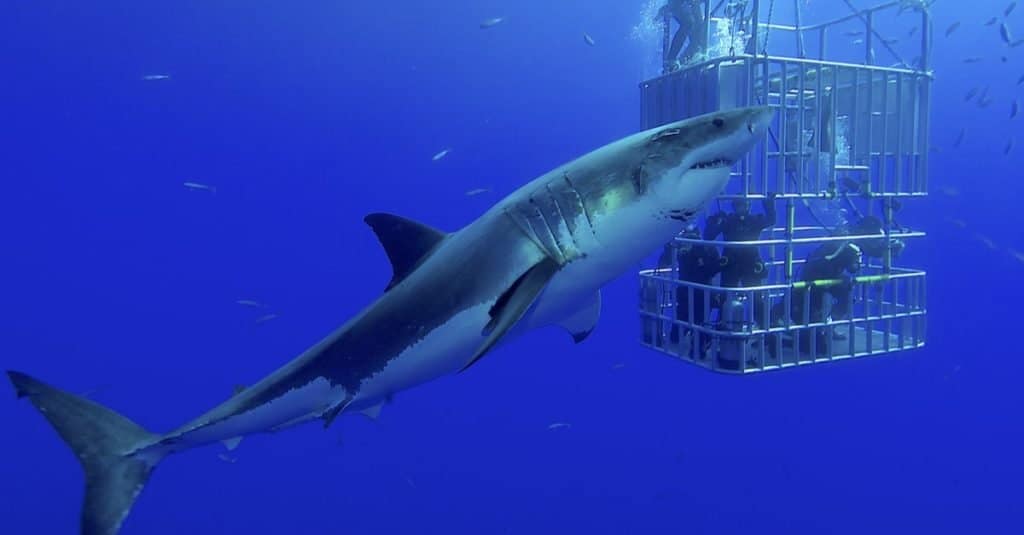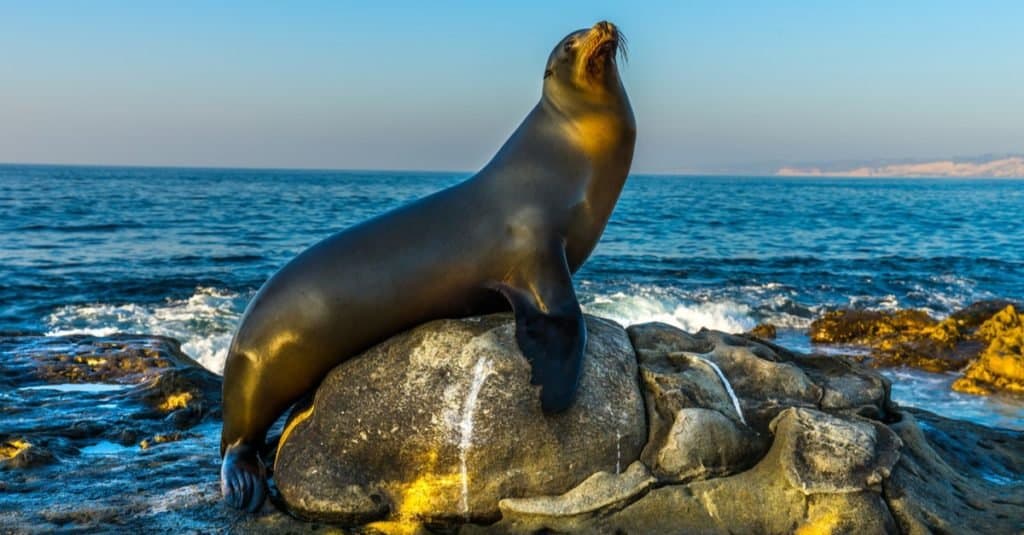Key Points:
- Characteristics of a mammal include: giving birth to live young, producing milk, breathing air through lungs, having hair or fur, and having a backbone.
- Sharks are fish and not mammals, though a certain type called viviparous sharks (such as the hammerhead shark) do give birth to live young. Oviparous and ovoviviparous sharks birth babies with eggs.
- Sharks get oxygen through gills rather than lungs, and they don’t have skeletons; rather, they have tough, flexible cartilage that is less dense than bone.
Sharks have ruled the ocean waters for over 400 million years. There are more than 400 species of these fierce predators. Some people think sharks are mammals, but they’re not. They’re members of the fish family.
What Is a Mammal?
The class Mammalia includes a huge number of animals. All mammals are warm-blooded vertebrates whose offspring drink milk.
How can you tell if an animal is a mammal? There are several identifiers. Here are some key ones.
- They give live birth. Mammals are viviparous, which means they give birth to live young. The exceptions to this rule are monotremes, which are mammals that lay eggs. The platypus and echidna are monotremes.
- They produce milk. Infant mammals require their mother’s milk in the first weeks or months of their lives. All female mammals have mammary glands that allow them to nurse their young.
- Mammals breathe air through their lungs. Even underwater mammals use their lungs to breathe.
- They have hair or fur. All mammals have fur or hair. Some marine mammals are the exception to this rule.
- They are vertebrates. All mammals have a backbone. Amphibians, fish and reptiles also have backbones, but they lack the other characteristics of mammals.
- Mammals are warm-blooded. This means they maintain an even body temperature.
Sharks Are Not Mammals
As you can see, sharks don’t fit the criteria for mammals in the most important respects. They don’t produce milk, they don’t have hair, and most of them are cold-blooded.
The only characteristic they share with mammals is that some shark species give live birth.

The
great white shark
is one of more than 450 shark species and is the largest of all predatory sharks in the ocean today.
©Stefan Pircher/Shutterstock.com
How Sharks Give Birth
Sharks give birth in three ways. They can be viviparous, oviparous, or ovoviviparous.
Viviparous sharks give birth to live young after the egg has hatched inside of them and been fed through the placenta. A litter may be anywhere from 2-20 pups for most sharks.
The hammerhead shark, Mako, and Bull shark are viviparous.
An oviparous shark lays an egg that stays inside an egg sac until it develops into a baby shark or pup. The shark then gives birth to the pup.
The egg sac, known as the mermaid’s purse, contains all the nutrients that the growing baby shark needs. Some egg sacs have tentacles that allow them to attach to the ocean floor or other structures so they don’t get washed away. The cat shark (Scyliorhinus canicula) gives birth this way.
An ovoviviparous shark produces eggs that stay inside the shark’s body until the pups are ready to be born. The shark then gives birth to the live pups. Whale sharks (Rhincodon typus) give birth this way.
Why Do People Think Sharks Are Mammals?
Because sharks give live births, some people think this automatically makes them mammals. They also confuse sharks with sea mammals like dolphins, porpoises, and killer whales. Sharks have similar body shapes to these mammals, and they’re around the same size.
The confusion is understandable because sharks and marine mammals share some characteristics.
A shark, however, is a fish. A shark doesn’t use lungs to breathe; rather, it breathes by taking oxygen in through its gills. And instead of a skeleton, the shark has tough, flexible cartilage that is less dense than bone. In fact, this characteristic makes sharks special, classifying them as a type of fish called an elasmobranch. Other fish that belong in this category include rays, skates, and sawfish.
Marine Mammals

On land, a sea
lion
can rotate its hind flippers underneath the pelvic girdle, enabling it to support its weight and walk on all fours.
©Daniel Avram/Shutterstock.com
All the following animals are marine mammals, as they give live birth, produce milk, breathe through their lungs and maintain even body temperatures:
What Makes a Marine Mammal Different from Sharks and Other Fish?
Marine mammals have adaptations that allow them to live near or in the water. They have sleek, streamlined bodies to reduce water resistance, which makes them fast, strong swimmers.
They have specialized lungs and hearts that make it possible to breathe underwater. They usually have thick layers of fat for insulation. Most have physical adaptations like fins or flippers that help them navigate in the water.
Marine mammals fall into four different taxonomic or family groups. Pinnipeds are seals, sea lions and walruses. Cetaceans include whales, dolphins and porpoises. Sirenians are manatees and dugongs, and marine fissipeds include polar bears and sea otters.
Cetaceans and sirenians spend their entire lives underwater. Pinnipeds divide their time between land and sea, and fissipeds spend most of their lives on land.
In contrast, sharks and other fish spend all their lives in the water.
Sharks Are Not Mammals
Sharks are large, carnivorous fish that have long fascinated humans. These fierce predators are important to the ocean’s ecological balance.
The photo featured at the top of this post is © Alessandro De Maddalena/Shutterstock.com
FAQs (Frequently Asked Questions)
Are All Sharks Man eaters?
Not every species is a man eater. The whale shark, which is the biggest fish in the sea, is a gentle giant that never attacks humans. Despite their fearsome reputation, only a handful of sharks are aggressive towards humans. These include the great white, hammerhead and tiger sharks. You have more chances of being hit by lighting or attacked by a crocodile than becoming a shark’s dinner.
In fact, conservationists point out that sharks have much more to fear from humans than the other way around. Human activity, especially fishing, has decimated their populations.
Are Sharks Endangered?
Sharks are facing population decline and possible extinction because of the Asian trade in shark fins. A practice known as “finning” is responsible for 90% of these population declines. Habitat destruction and pollution account for less than 5% of the decline.
When shark populations fall, they take a long time to recover. Sharks do not reproduce until they reach about 15 years, and they only give birth to one or two pups at a time.
What Type of Fish Are Sharks?
There are three different fish types. They are jawless fish, bony fish and cartilaginous fish. Jawless fish include lampreys and other fish that don’t have jaws.
Most fish are bony fish. Their skeletons are made of bone, and they have swim bladders, also known as air bladders or gas bladders, that allow them to stay at a certain sea depth for extended periods of time.
Cartilaginous fish, including sharks, have skeletons made of cartilage rather than bone. They don’t have swim bladder.
Are Penguins Marine Mammals?
No, penguins are birds.
Thank you for reading! Have some feedback for us? Contact the AZ Animals editorial team.






